Hello, Children
In which Norm reaches into the depths of Warner's NIGHTMARE ON ELM STREET mega-set, and also revisits Paramount's AEON FLUX in 4K.
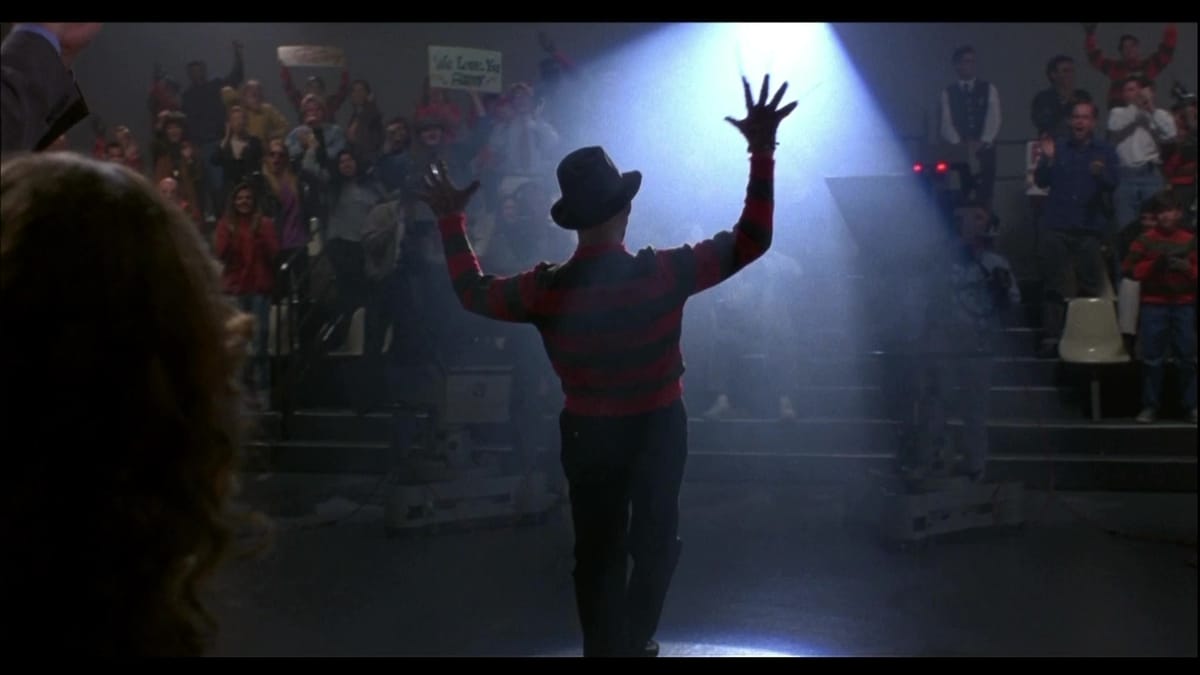
This time last year, Warner Bros. Discovery celebrated Halloween with a 4K upgrade of Wes Craven’s A Nightmare on Elm Street. It must have done great numbers, because for 2025 the studio is releasing the entire original franchise in UHD, in a seven-disc collection called, reasonably enough, A Nightmare on Elm Street: 7-Film Collection. If you’re a Freddy Krueger die-hard, you likely already bought it when it came out last week; those of you on the fence, feel free to keep reading.

We discussed the weirdness of the Freddy phenomenon last year – a child murderer turned dream demon who was immediately embraced by horror fans, evolving over the course of the Elm Street movies to the point into a wisecracking game-show host. In one of the interviews produced for the first DVD release of the series, Craven framed Freddy’s appeal as a sort of defense mechanism, with audiences of the day choosing to love Freddy so they wouldn’t have to fear him. Personally I think it has more to do with Robert Englund’s inherent likeability underneath the makeup; he’s having fun stalking his co-stars, and it comes out in Freddy’s spectral swagger. You can’t help but root for a killer who enjoys his work this much.
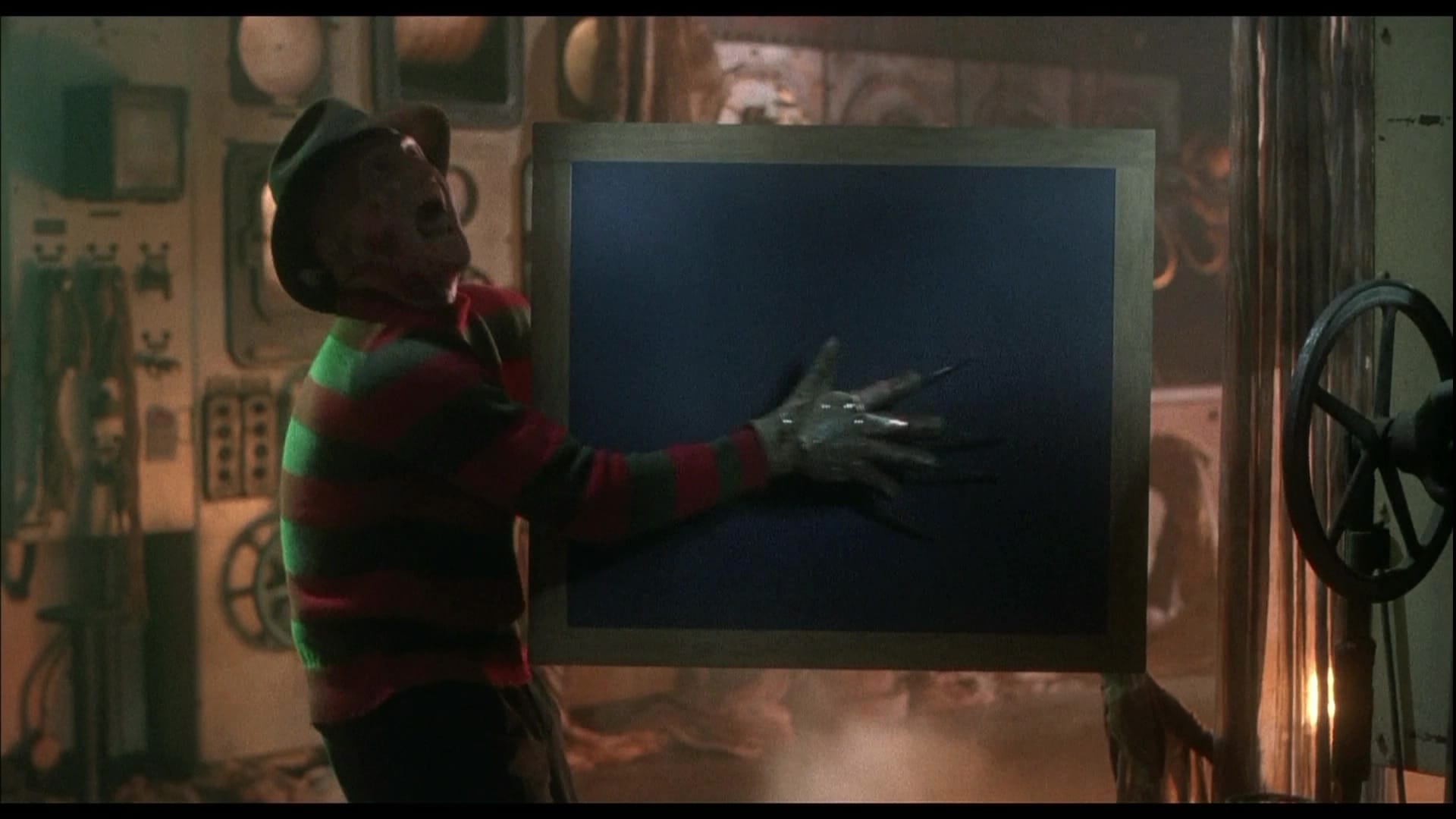
But there were limits to Freddy’s reach. Bringing Freddy into the real world for a climactic confrontation worked in the confines of Heather Langenkamp’s bedroom, but when Freddy’s Revenge tried to build its entire third act on the same notion, it turned the monster into just another slasher.
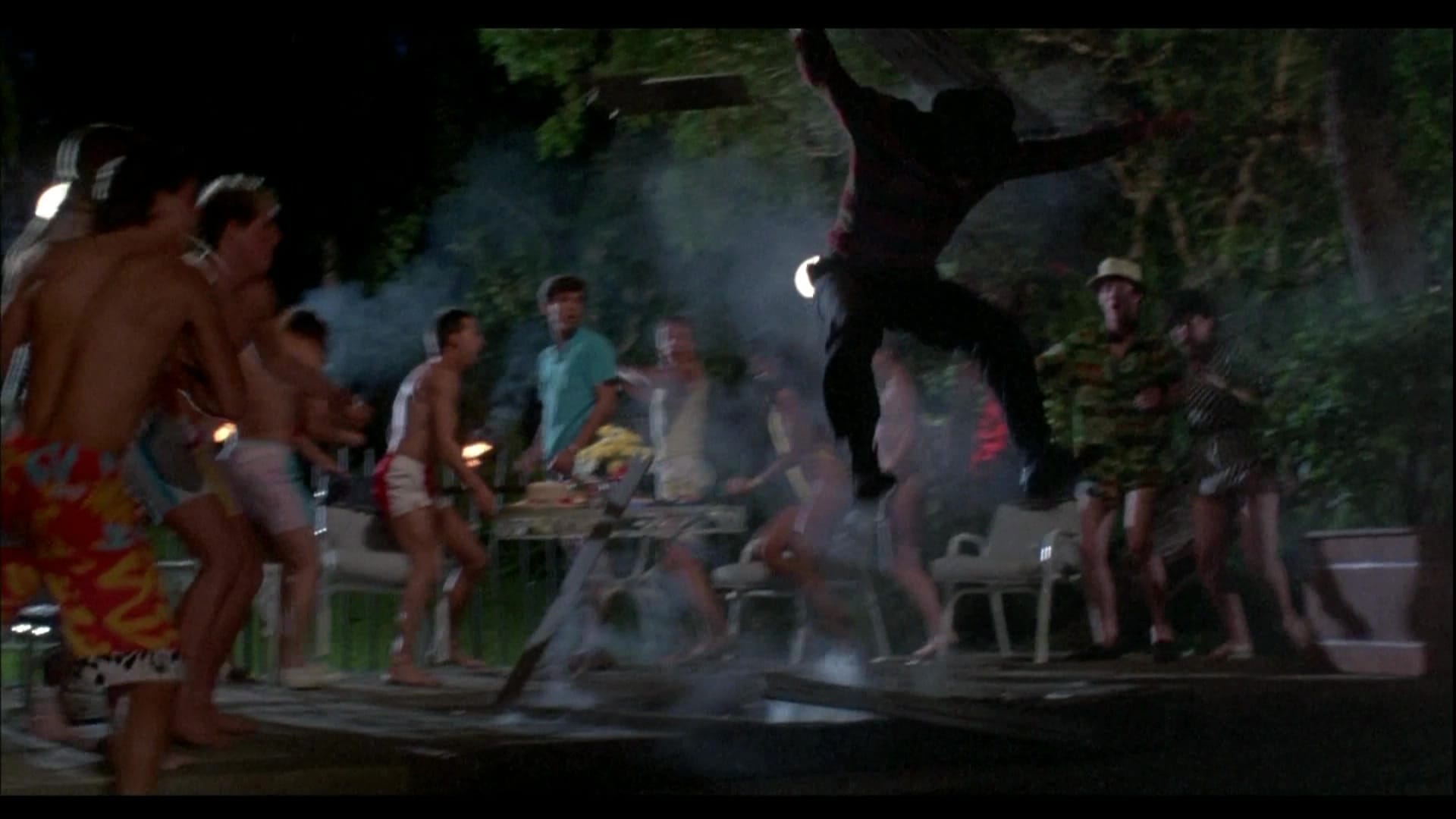
As New Line honcho Robert Shaye explains in one of many, many archival interviews in the set, audiences wanted more creepy dreams – and that’s what they got for the rest of the series, which resulted in diminishing returns.
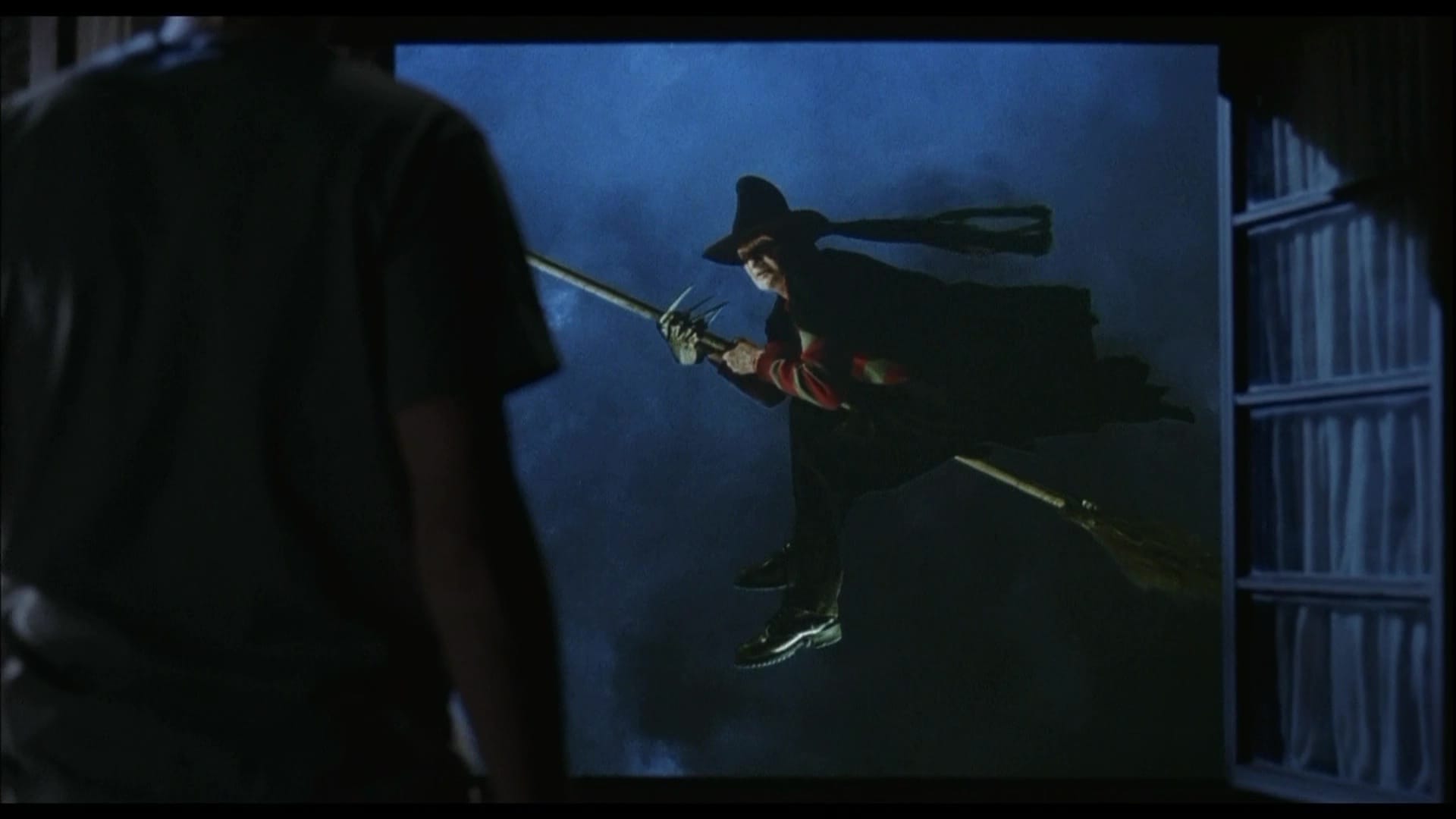
Robert Englund delivered his terrible puns like a pro, but a series of talented screenwriters and directors struggled against the limitations of the gimmick. Michael Myers could follow Laurie Strode anywhere, and Jason could take Manhattan, but ol’ Fred Krueger was stuck haunting the dreams of horny teenagers.
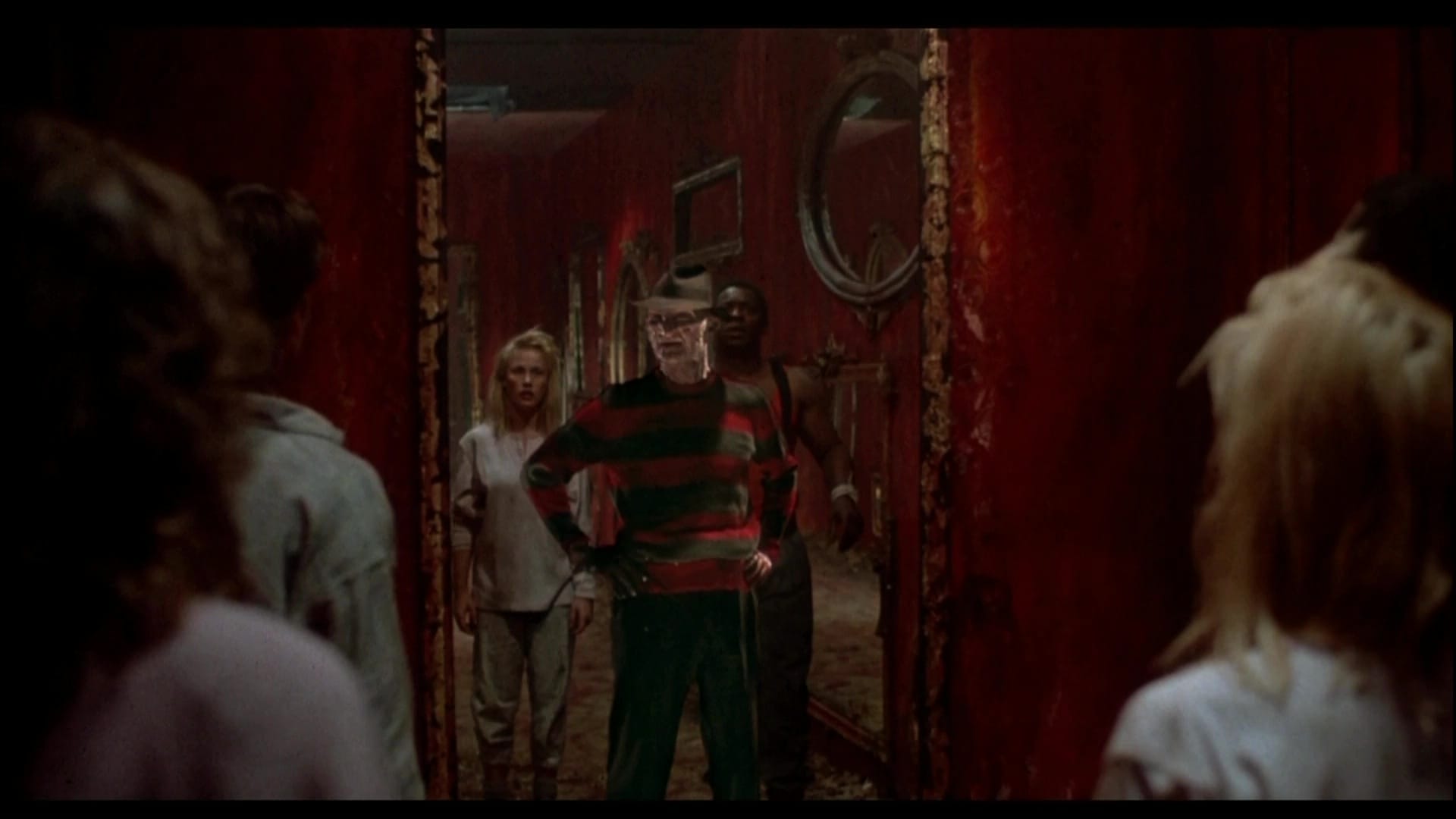
Not that there weren’t highs, mind you. The third one, Chuck Russell’s Dream Warriors, hits on the idea of Freddy’s prey using the unlimited possibilities of dreams to beat him at his own game, and the fourth film, Renny Harlin’s The Dream Master, takes that concept and runs with it, delivering some of the series’ most spectacular and surreal set pieces. And of course the seventh and presumably final chapter, Wes Craven’s New Nightmare, prefigures Craven’s meta reinvention with Scream by taking place in “our” world, where preparations for a new movie have somehow unleashed the demon that inspired Craven’s original script, with both the filmmaker and his stars in mortal danger. Audiences rejected it because its new take on Freddy wasn’t funny; I loved it, because Craven was trying to do something radically different with the property – and mostly succeeding.
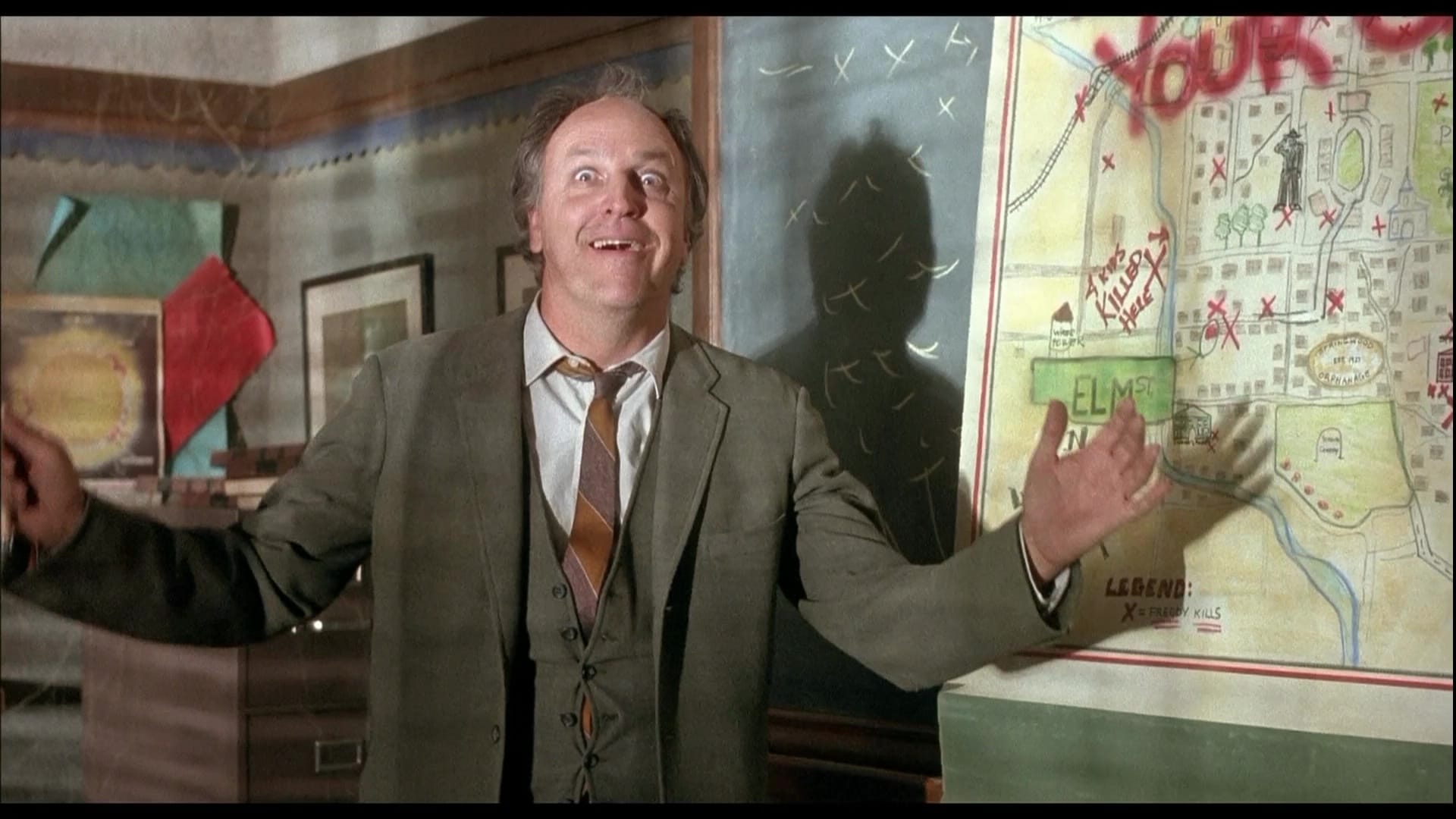
One thing no remembers about the Nightmare sequels is the wild lineup of talent New Line tapped to develop their scripts at speed: Bruce Wagner and Frank Darabont co-writing Dream Warriors with Craven and Russell, future Oscar-winner Brian Helgeland co-writing Dream Master from a story he wrote with William Kotzwinkle, maverick horror novelists John Skipp and Craig Spector coming up with the story for Dream Child with Leslie Bohem, and future Warner CEO and co-chair Michael De Luca scripting Freddy’s Dead.
They might not all have hit gold, but even the weaker installments at least tried stuff. There’s an entire documentary arguing for Krueger’s possession of a terrified teenager in the first sequel, Freddy’s Revenge, as a metaphor for closeted queer identity, and the fifth one, The Dream Child, tries to make sense of Freddy’s messy origin story by offering flashbacks to his literal conception as “the bastard son of a thousand maniacs” – which is exactly what you think it is.
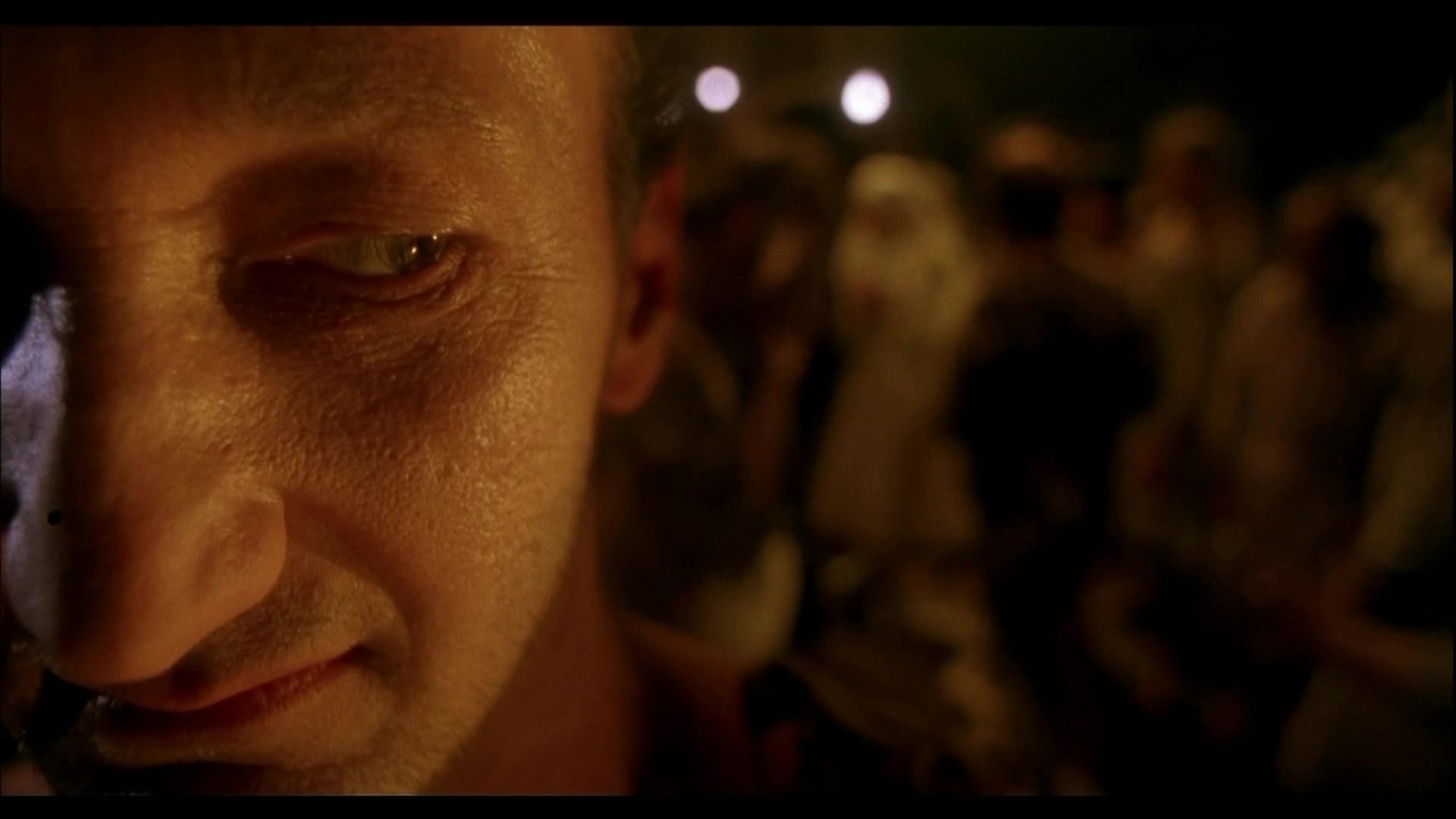
Even presented in an impressionistic fashion, it’s easily the ugliest set piece of the series – a series that built its reputation on children and teens being tortured and killed – and it’s disturbing in a way the franchise cannot accommodate.
The sixth chapter, Freddy’s Dead: The Final Nightmare, tried to get back to the fun stuff and wrap everything up in a neat little package, with Lisa Zane’s twentysomething psychologist discovering – through an extremely convoluted means – that she’s Freddy’s daughter, and he needs her into the world beyond Elm Street. As any of us would do, Zane turns to dream coach Yaphet Kotto (!) to delve into Freddy’s past and stop him.
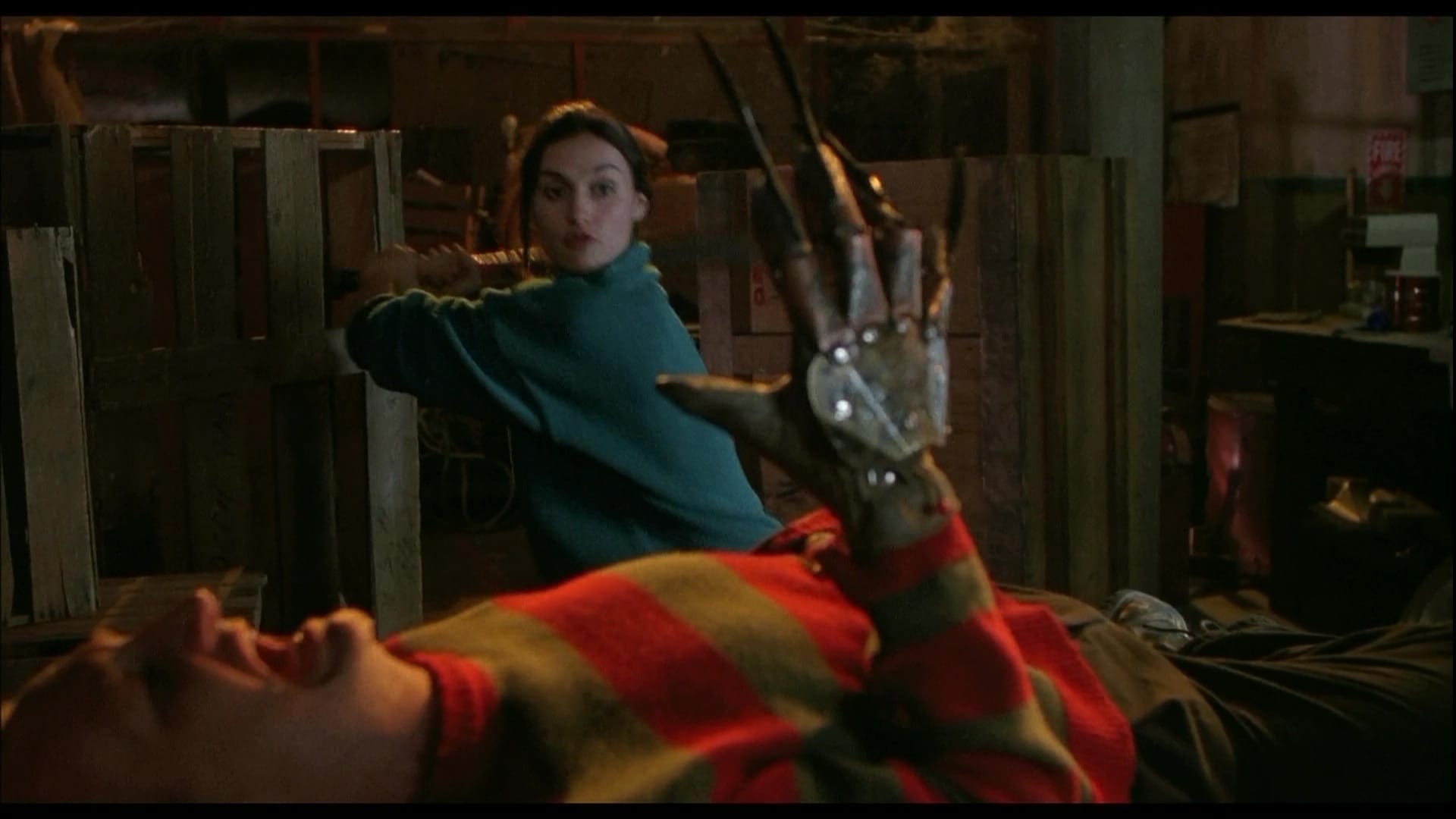
Designed to bring the curtain down on the Elm Street series in advance of and expected face-off with Jason Voorhees, Freddy’s Dead was designed as one last kick at the franchise can, and director Rachel Talalay packs it full of stunt cameos and spectacle, all building to a 3D climax that was, indeed, pretty satisfying. It did decent business while also declaring an end to the story, which opened the door for Wes Craven’s New Nightmare to take the conceptual risks the franchise couldn’t handle when it was a going concern.
Obviously, if you’re buying this set you want to know two things: Are my favorites in there and how do they look? The answers are “Yes, unless you’re a big Freddy Vs. Jason die-hard” and “pretty great, honestly.” None of these films was particularly polished to begin with, and the bulk of the nightmare set pieces are shot in murky, claustrophobic spaces to protect the effects as much as possible – which, towards the back half of the series, also included Englund’s increasingly simplistic facial prosthetics.
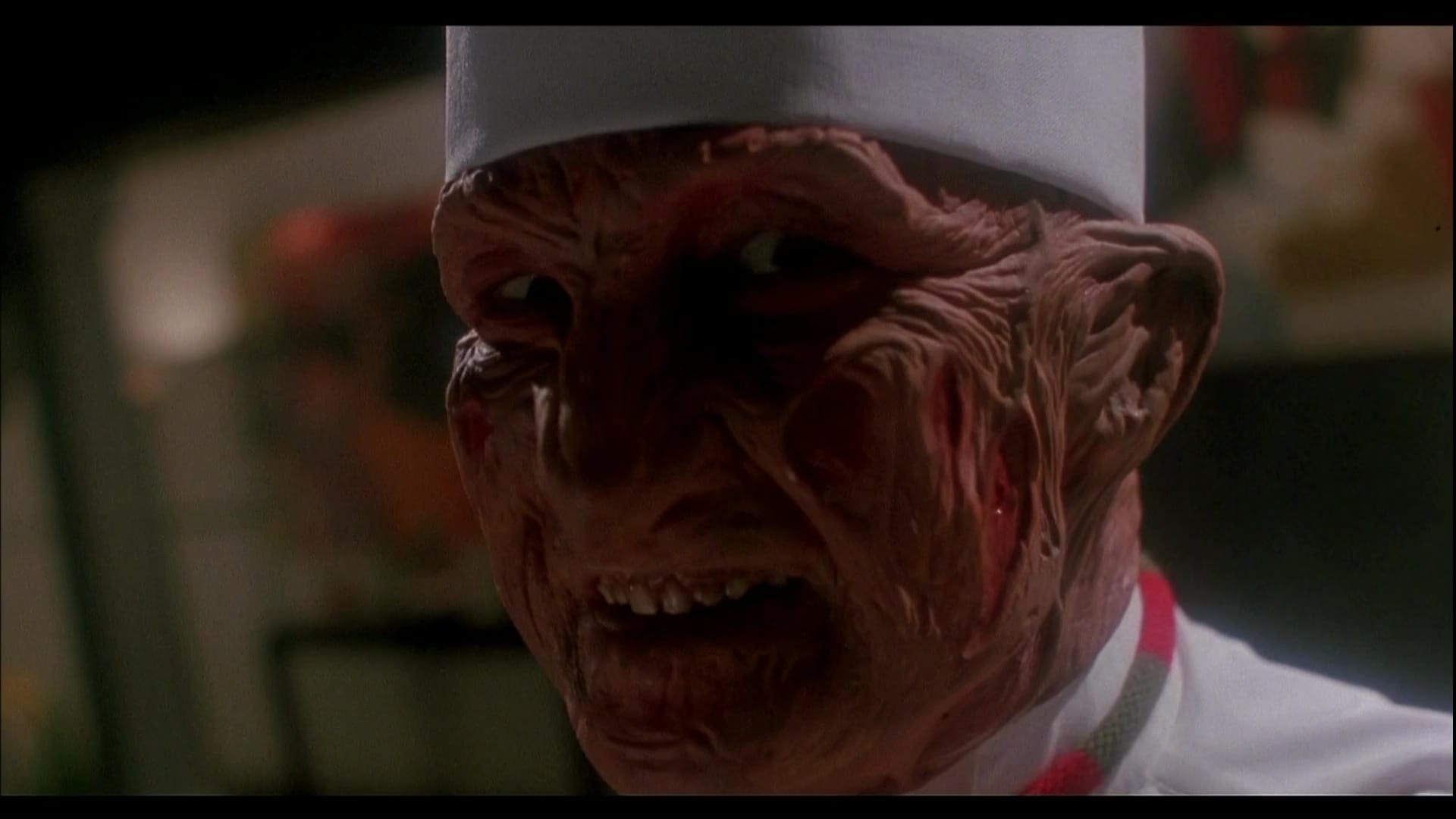
But as with last year’s restoration of the first Nightmare, Warner has done some excellent work with difficult material, honoring the grainy cinematography and flat lighting of ’80s teen-centric horror while bringing out the elements that were always there – the dirty reds and greens of Freddy’s sweater, the brownish-red blood caked everywhere after a dream death, the dull copper of the pipes in Hell’s boiler room. Even the omnipresent beehive smoke has texture.
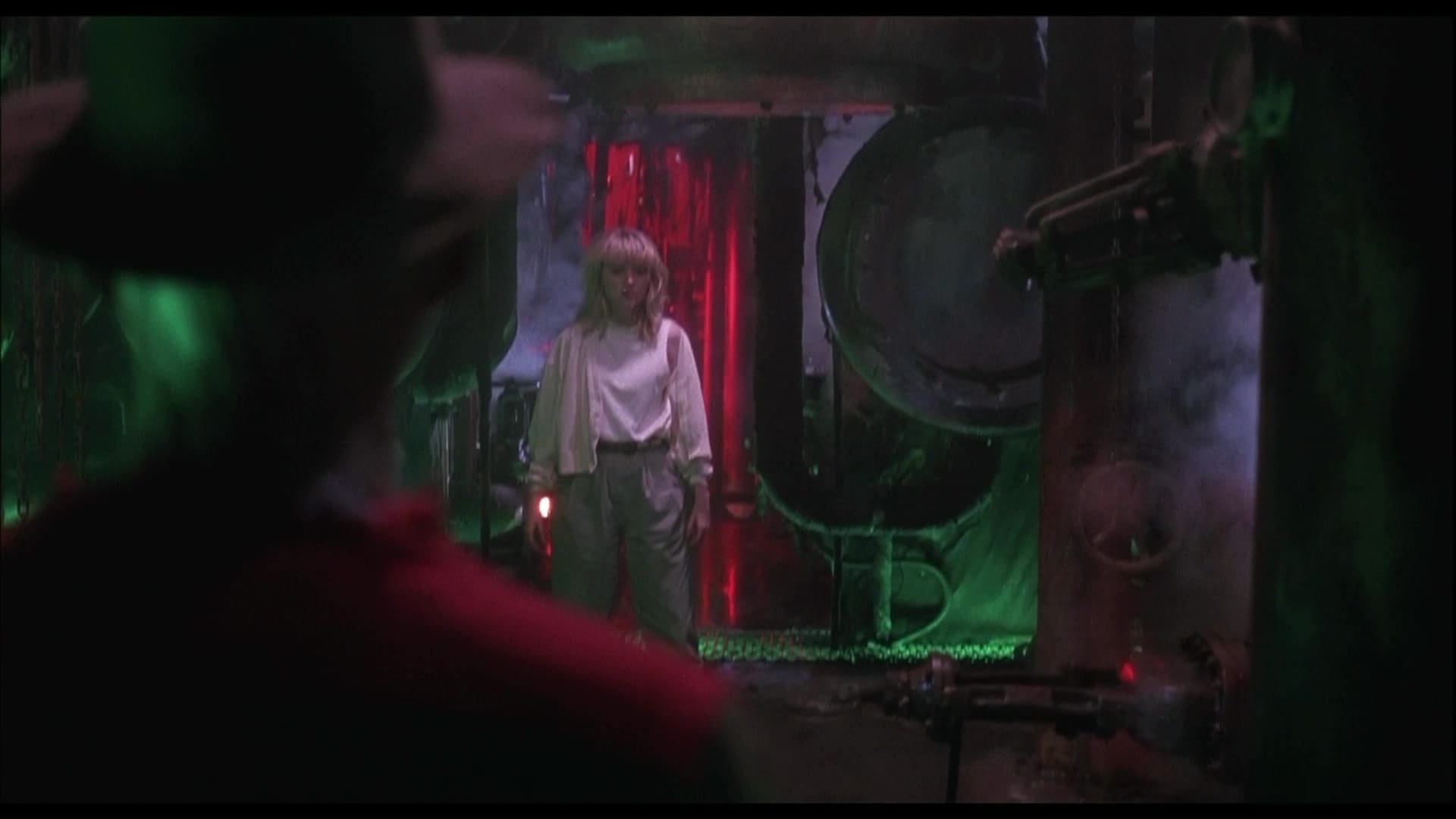
All seven features are offered with their original theatrical soundtracks as well as new Dolby Atmos mixes … and while I’ll always be an originalist, the remixes have a little fun with the heightened states of various dream worlds, so feel free to experiment. The uncut versions of the first and fifth films are also included, as is the option to watch Freddy’s Dead in 3D for the first time on any video format, complete with a pair of red-and-blue glasses.
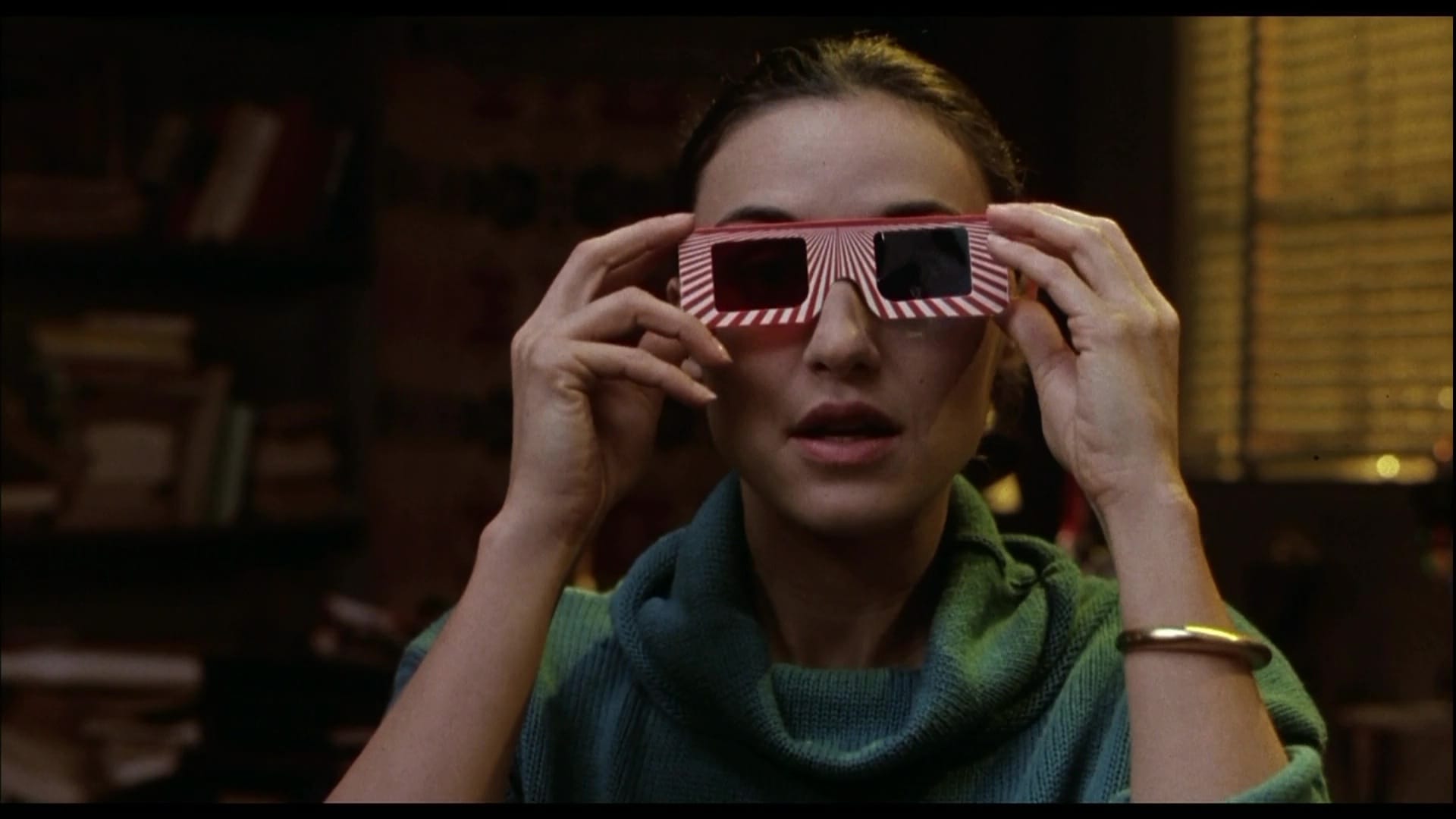
And almost all of the extras produced for New Line’s first Elm Street DVD boxed set are here, though some of the content for the bonus DVD included with the franchise’s first Blu-ray release is missing. The “Fear Himself” documentary didn’t make it over, nor did two episodes of the Freddy’s Nightmares TV series or the Fat Boys and Whodini music videos produced for The Dream Child. (Don’t panic: Dokken’s Dream Warriors title track is included with Part III, because Warner would never do us like that.)
These are, I would wager, negligible losses. And they’re offset by two new featurettes, “Boiler Room Confessional” and “Freddy’s Footnotes,” in which Englund, Freddy’s Revenge director Jack Sholder, Dream Warriors director Chuck Russell and New Nightmare DP Mark Irwin offer their thoughts on their contributions to the series and its overall legacy. (They’re on the New Nightmare platter, along with the “Welcome to Prime Time” and “Conclusions” interview galleries from that bonus DVD.
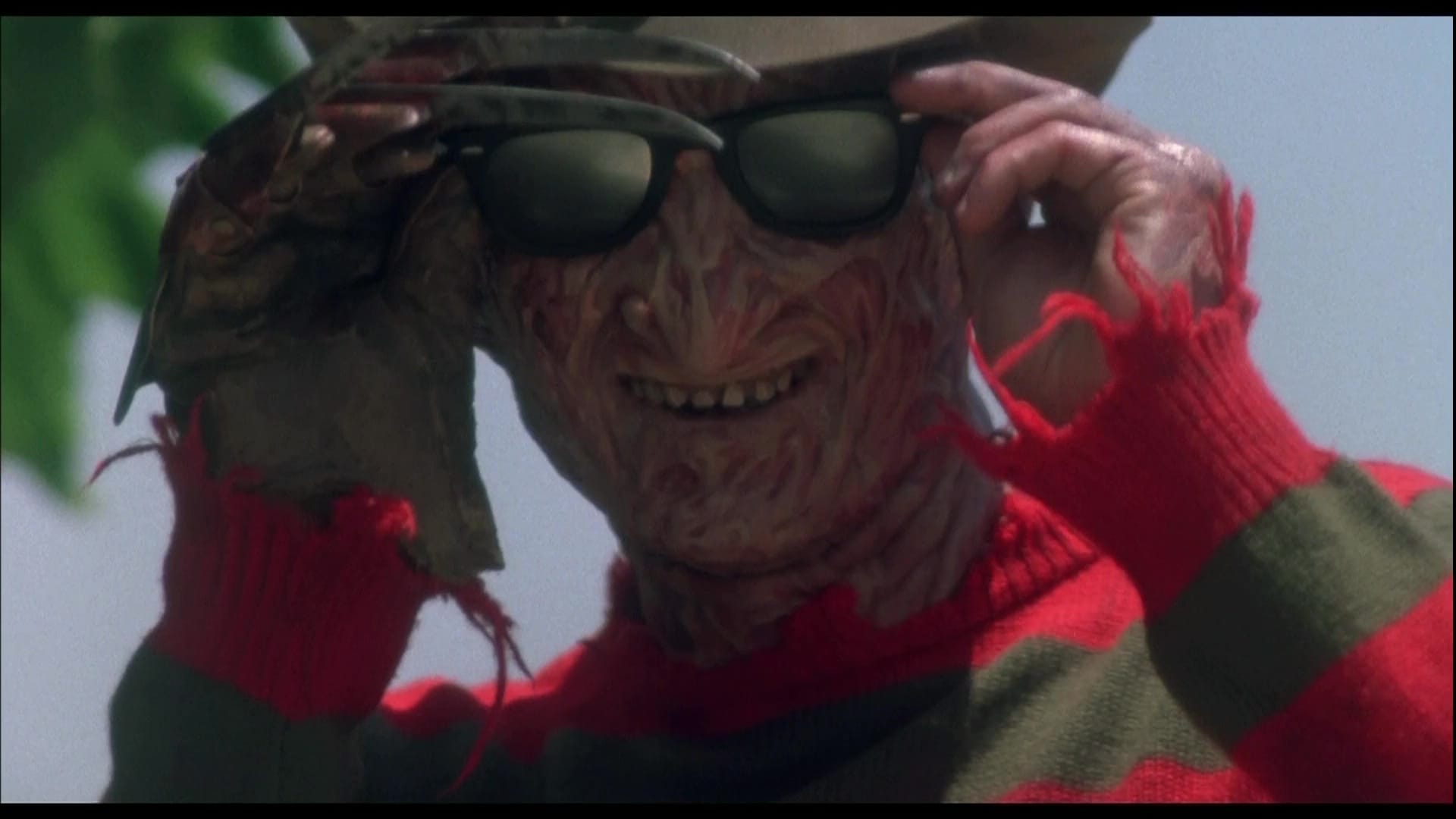
Neither Ronny Yu’s Freddy Vs. Jason nor Samuel Bayer’s 2010 update of the original – with Jackie Earle Haley as Freddy and Rooney Mara as his Nancy – are included here, so the set isn’t as complete as it could be. But given the way Arrow Video has been feasting on Warner’s New Line catalogue, I wouldn’t be surprised to see them rolled out on that label before too long. Especially if this set does as well as Warner seems to think it will. Feast your eyes, boys and ghouls.
And speaking of fan favorites … well, actually, is Karyn Kusama’s Aeon Flux a fan favorite? Or even a cult film? I would not have thought so, but Paramount is rolling out a new 4K steelbook edition to mark its 20th anniversary, so there you go. Do enough people like it that much? Do people even remember it? I barely did, and I saw it the first time around.
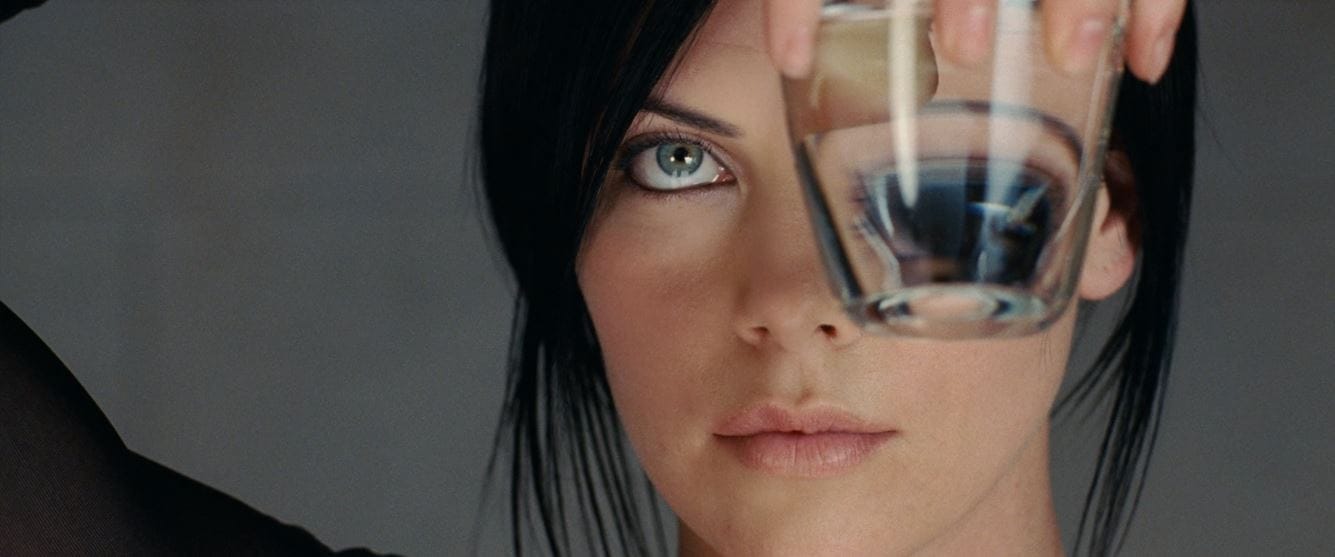
Aeon Flux is a very dopey sci-fi actioner in which Charlize Theron runs, jumps and kicks her way through a totalitarian dystopia as a committed freedom fighter, occasionally accompanied by her best pal Sophie Okonedo, who has hands for feet. I don’t think that detail was included in the MTV animated shorts from which Phil Hay and Matt Manfredi’s script was freely adapted, but 2005 was a weird time and “super-cool rebel who has hands for feet” was a totally valid character choice.
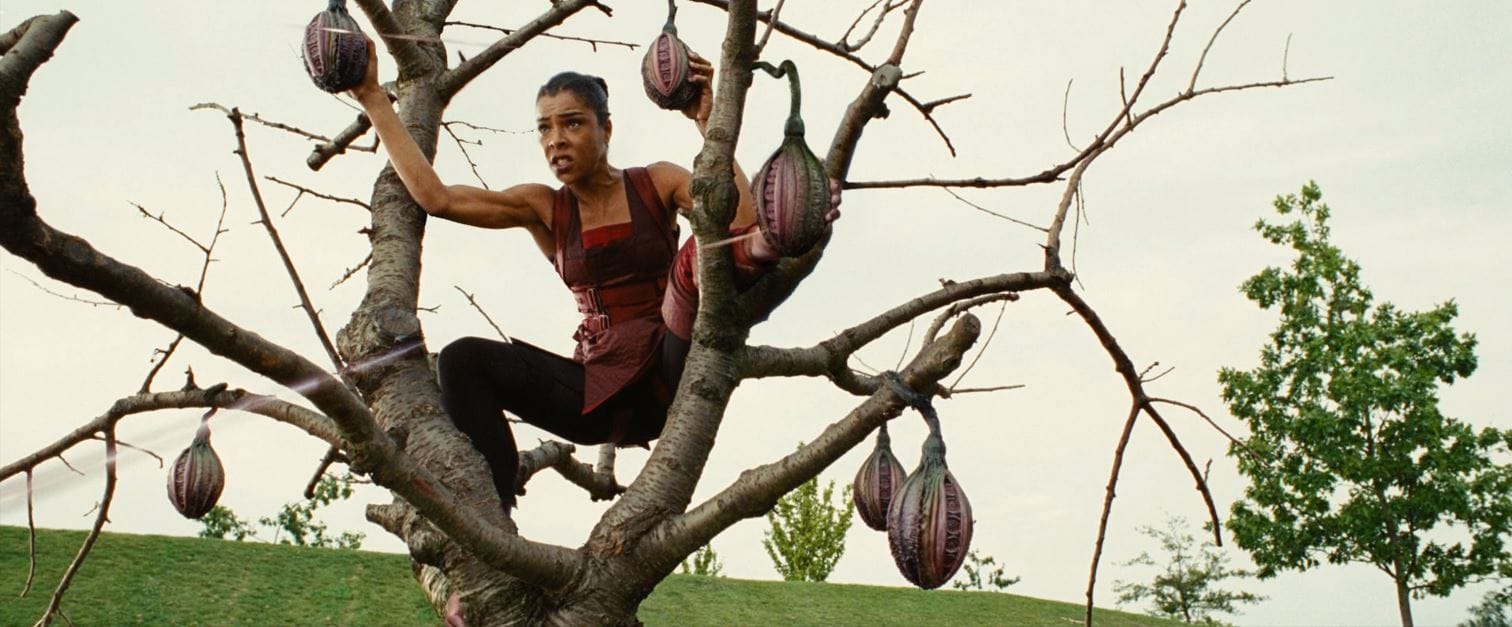
We can all agree that both Kusama and Charlize Theron are doing their best, though, as are Okonedo, and Marton Czokas, and Jonny Lee Miller, and Paterson Joseph, and Pete Postlethwaite and Francis McDormand too. It’s a preposterously overqualified cast, really; Theron had just won an Oscar for Monster, McDormand had one for Fargo, Okonedo was coming off her own nomination for Hotel Rwanda, and Postlethwaite had been nominated years earlier for In the Name of the Father. And here they all are, walking around a series of cool Berlin locations talking about techno-oligarchy and revolution and eternal souls and destiny.
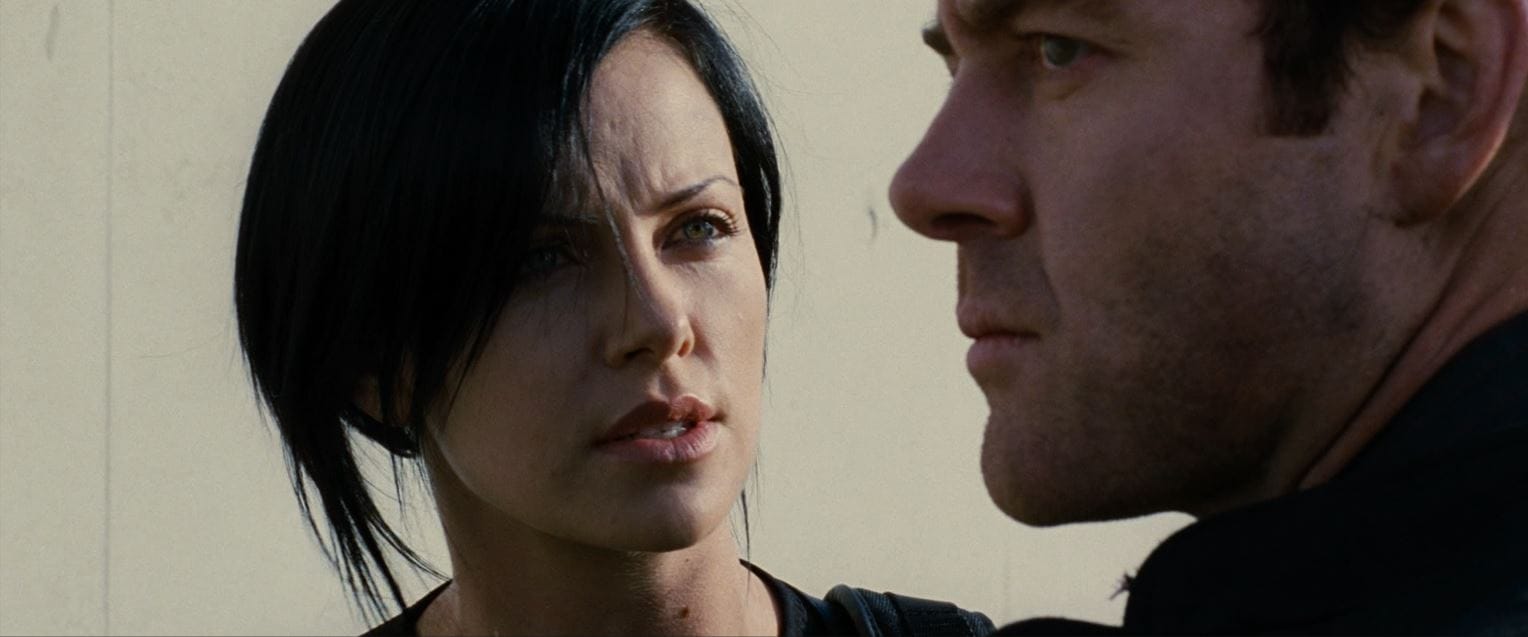
There are moments where it almost clicks, where Stuart Dryburgh’s manic camerawork and Graeme Revell’s techno-flavored score reach a kind of delirium that matches the way the plot lurches from one idea to another, as Theron’s hot rebel Aeon is hunted by the ruling elites, and then by her own people, after failing to assassinate Czokas’ hot overlord Trevor Goodchild. Again, it’s all just an excuse for running and jumping, and the occasional stilted love scene, and maybe a teensy bit of acting in the margins. It’s just kind of there, and then it ends, and you get on with your day.
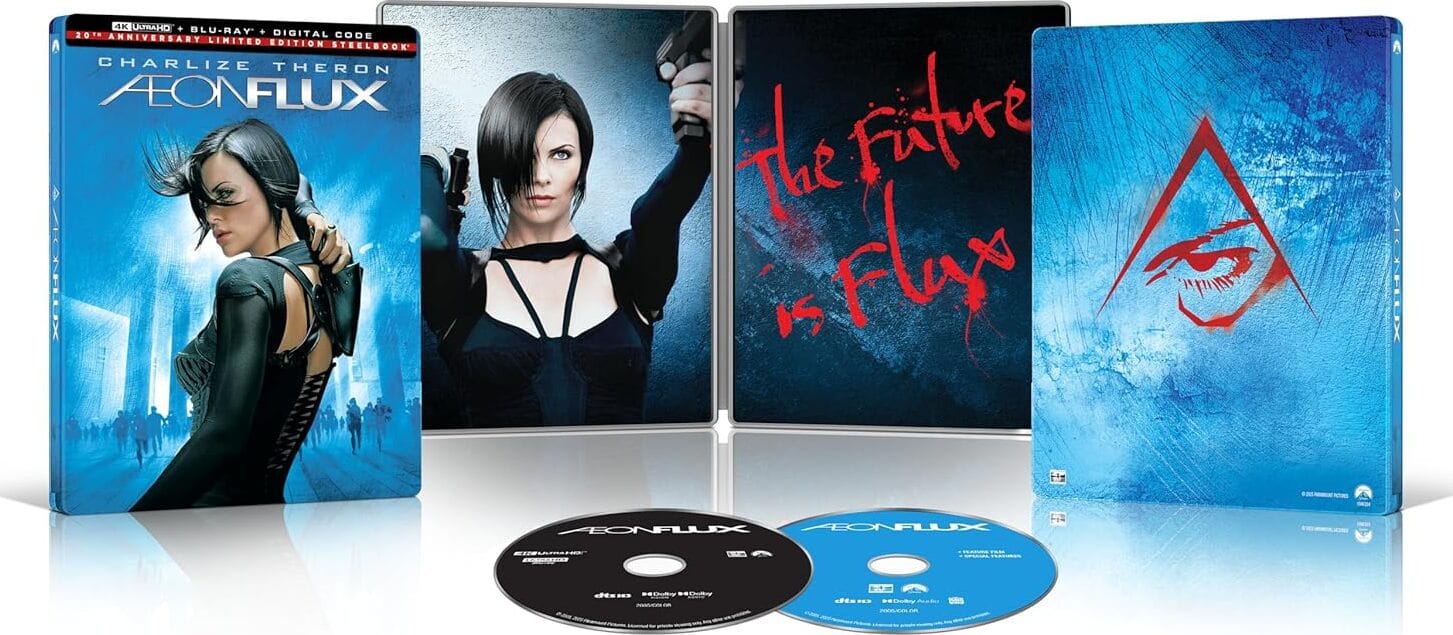
But clearly the film has some fans, hence this new edition – which is, in every way, an improvement on the original Blu-ray release. Aeon Flux was one of Paramount’s very first high-definition discs, and that Blu-ray is included in this package along with the remastered 4K platter to show you just how poorly its early MPEG-2 master has aged. The UHD improves on literally every aspect of the presentation, from flesh tones, fine detail and consistent black levels to a more robust sound field, the difference between replacing the lossy Dolby Digital and DTS options with a DTS-HD track.
Paramount didn’t commission any new special features for this release – again, I don’t think anyone was particularly excited to revisit it – but the original audio commentaries and hour-plus of production featurettes are right there on the companion Blu-ray. If you’re a fan of the film, this is the best possible way to watch it at home ... and you won’t lose anything by trading up. So it’s got that going for it, I guess.
A Nightmare on Elm Street: 7-Film Collection is now available in 4K from Warner Bros. Discovery Home Entertainment; Aeon Flux is now available in a 4K/Blu-ray combo from Paramount Home Media Distribution.
Up next: Brad Pitt drives a really fast car, and you get to watch!
